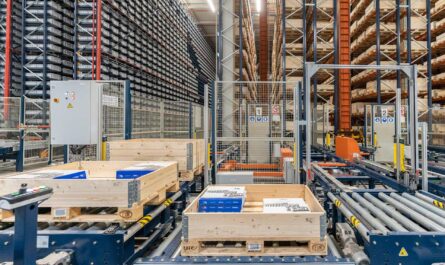What is Functional Safety?
Functional safety is the ability of a system to perform its intended function in a safe, secure and dependable manner. It involves analyzing potential hazards and risks in a system, and then designing the system to prevent or mitigate these risks by incorporating appropriate safety measures. The goal of functional safety is to protect people, assets and the environment from potential harm that could arise due to malfunctions or failures in automation systems.
Functional Safety Standards and Regulations
Industry standards like IEC 61508 and sector-specific standards like ISO 26262 for automotive help define functional safety requirements. They provide a risk-based approach to identify safety functions, determine safety integrity levels (SIL) based on risk, and outline requirements like architectural constraints, safety life-cycle processes, quality management etc. Compliance to these standards is mandatory for automated systems used in industries like automotive, rail, medical devices etc. Various regulatory bodies also mandate functional safety assessments and certification for equipment approval and product liability.
Functional Safety Life Cycle
A systematic life cycle approach is recommended to incorporate functional safety right from the design phase. The key stages in a functional safety life cycle are:
– Hazard and Risk Analysis: Identify foreseeable hazards, estimate likelihood and severity of potential accidents.
– Safety Requirements Specification: Define Functional Safety functions to mitigate risks, determine quantitative safety targets.
– Overall Safety Concept: Outline architectural design, security measures and safe states.
– Implementation of Safety Mechanisms: Design fault tolerance, diagnostics and self-tests as per SIL requirements.
– Integration and Testing: Validate safety implementation through integration and functional safety tests.
– Validation of overall Safety: Conduct systematic field safety validation to verify requirements are met.
– Modification Management: Manage changes with robust configuration and version control.
– Decommissioning or Disposal: Handle obsolescence or disposal as per applicable regulations.
Functional Safety Design Principles
Some key principles that guide the functional safety design process are:
– Inherent or ‘designed-in’ safety: Safety should be an innate part of the design from the outset rather than an add-on later.
– Fail-safe behavior: The system must be fail-safe and enter a defined safe state in case of failures.
– Fault tolerance: The design should avoid common cause failures through redundancy and independence.
– Determinism: Functional Safety logic execution must be time-triggered and deterministic to prevent unpredictable behavior.
– Diagnostics: The design must include self-diagnostics to detect internal faults within the specified detection coverage.
– Robustness: The system needs to be robust to both internal and external hazards like environmental stresses.
– Simple and intuitive interfaces: Safety logic should be easy to understand for maintenance, updates and modifications.
– Documentation: Complete documentation covering functional safety requirements, design, validation is essential.
Functional Safety in Industrial Automation
In industrial automation, functional safety is critical to protect human lives and equipment from potential hazards in machinery. Automation technology is used extensively in sectors like manufacturing, power generation, chemical processing plants, oil & gas where systemic failures can have catastrophic consequences.
Common process automation functions that require functional safety implementation include emergency shutdown systems, burners and boiler management, turbine controls, pressure protection, fire & gas detection systems and emergency drive-off controls. Programmable logic controllers (PLCs), distributed control systems (DCS), safety instrumented systems (SIS), emergency shutdown systems, fire & gas detection systems are examples of equipment that perform functional safety tasks.
Functional hazard analysis is conducted to identify failure modes like overpressure, overfill, overspeed, fire etc. Appropriate safety instrumented functions are then designed to detect faults and place the process in a safe state. Redundant hardware architectures, self-diagnostics, use of voting logic ensure reliability targets as per safety integrity levels are met. Standard lifecycle processes ensure functional safety is maintained over the entire operational lifetime of the automation system.
Functional Safety and the Future of Mobility
Functional safety is of paramount importance in next-generation mobility technologies like self-driving vehicles, drones and robotics. As autonomous systems take over critical safety functions from human operators, the room for failures shrinks tremendously. Regulatory standards like ISO 21448 (Safety of the Intended Functionality) and UNECE WP.29 are under development to address functional safety challenges of driverless vehicles.
Advanced functional safety techniques like assurance cases, model-based development, simulation-based validation are being explored to verify complex machine learning and artificial intelligence used in autonomy. Virtualization, Software Defined Networking and Edge Computing introduce new attack surfaces that must be secured. Functional safety will play a defining role in establishing trust for autonomous mobility to scale commercially and receive broad societal acceptance. OEMs are strengthening safety governance, developing safety-rated systems and conducting extensive road testing to develop self-driving vehicles within rigid functional safety boundaries.
*Note:
1. Source: Coherent Market Insights, Public sources, Desk research
2. We have leveraged AI tools to mine information and compile it




